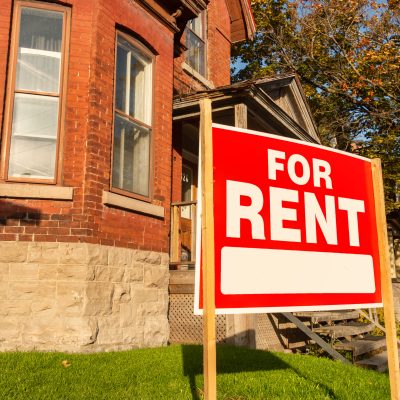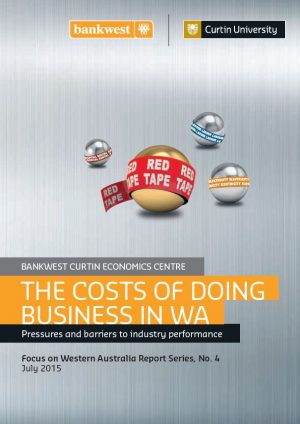Report reveals WA has highest payroll tax in Australia

A report released today (Wednesday 29 July) by the Bankwest Curtin Economics Centre (BCEC) reveals payroll tax, labour costs and wages to be the most significant cost pressures experienced by Western Australian businesses.
The report uses this information to provide a comprehensive overview of the State’s businesses and the cost pressures they face on a daily basis, how these have changed over time and throughout WA’s major regions.
Professor Alan Duncan, BCEC Director, said WA business revenues had been increasing at a faster rate than other states and territories. Common business costs across industries and states include wages, labour, intermediate inputs (such as electricity and transport) and capital.
“WA’s business input costs have been increasing over time and are high compared with other Australian jurisdictions,” Professor Duncan said.
Payroll tax places significant pressure on WA businesses and is an issue which is likely to compound over the coming years.
“Payroll tax thresholds have not been increased in line with wage inflation in WA, leading to payroll tax bracket creep. This has effectively brought more small businesses into the payroll tax system over time,” Professor Duncan said.
“For the WA payroll tax system to have remained neutral over the last decade would have required the July 2015 threshold to be nearly $1,100,000; 37.5 per cent higher than the current threshold of $800,000.”
The diminishing payroll tax threshold, introduced in the State’s 2014-15 Mid-year Review, will increase WA payroll taxes by up to $44,000. This means a business with a $2m payroll will see payroll tax rise by $7,881 (from $66,000 to $73,881). Businesses with a $4m payroll will pay $21,015 more under the new system ($197,015 compared with $176,000), and those with payrolls of $7.5m or more will pay $44,000 more in payroll tax.
“Western Australia now ranks first overall across all states and territories in payroll tax costs for businesses with payroll costs of between $1.75m and $7.5m, and first equal for payroll costs of just under $9.4m,” Professor Duncan said.
“With labour cost shares running at an average of around 28 per cent of total costs for businesses, wage increases can create considerable pressure, especially in small to medium enterprises that are less able to absorb price increases.”
“WA industry pays a higher overall average salary per employee, but this fact alone doesn’t necessarily mean that labour is more expensive. For example, a more productive workforce with higher seniority and skills in the State could explain these differences.
“However, wage cost measures that standardise for workforce quality do show that labour in WA has become more expensive over the last ten years.
“If we look at wage cost measures that control for changes in quality and quantity of work performed, we still see that labour costs in WA increased by 46 per cent from 2005 to 2015 – for Australia, the increase has been 38 per cent across the same period”.
The report also revealed that WA businesses are better able to translate labour costs to sales and services income compared with the national average. The labour cost per dollar of income earned by businesses is lower in WA compared to Australia in mining (by 16 per cent), manufacturing (by 22 per cent) and agriculture (by 13 per cent), despite there being a higher average wage per employee in these sectors in WA compared to national rates.
“The fact that WA businesses are better able to generate income at lower labour cost per worker than the national average is testament to their productivity and efficiency, and the skills and productivity of WA workers”, Professor Duncan said.
Wages in the resource rich areas of WA have grown the fastest. The Pilbara region has seen wages increase by 60 per cent over the last decade from an average annual wage of $58,000 to $93,000. The Goldfields-Esperance region has also seen substantial wage growth, with employees averaging the second highest wages in the state – around $69,000 each year.
Annual wages for Perth and Peel have tracked closely together over the last ten years, with average wages also increasing by 60 per cent in the last decade, from around $40,000 to $64,000.
The BCEC report also found that between 2009-10 and 2012-13, new business entries fell by a considerable 30 per cent. This equated to a net fall of almost 11,000 WA businesses. The pattern has recently reversed with business entries once again exceeding business exits in 2013-2014.
Professor Duncan said that costs and barriers to performance in WA were more problematic for some businesses and in certain regions and industries.
“Small to medium enterprises are more likely to report regulation and compliance as a significant barrier to performance than big businesses,” Professor Duncan said.
“Within the mining sector, 17.9 per cent of businesses reported government regulation being a significant barrier to performance in 2012-13.
“Small to medium businesses, those operating in remote or regional areas and those reliant on inputs that have seen the biggest price increases are among those most affected”.
All WA regions record higher average fuel prices per litre compared to Perth over the last fifteen years – the cost of a litre of diesel in the Kimberley is 17 cents higher than in Perth.
“For other businesses, cost pressures are mainly a product of increased demand, fuelled by strong industry-specific economic growth”, Professor Duncan said.
“Continued monitoring of cost pressures and microeconomic reform that focuses on taxation and industry specific issues will help to ease cost pressures for many businesses in the West. This will ensure the State builds on previous growth and has the ability to diversify and compete in a global market”.





